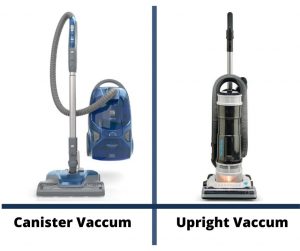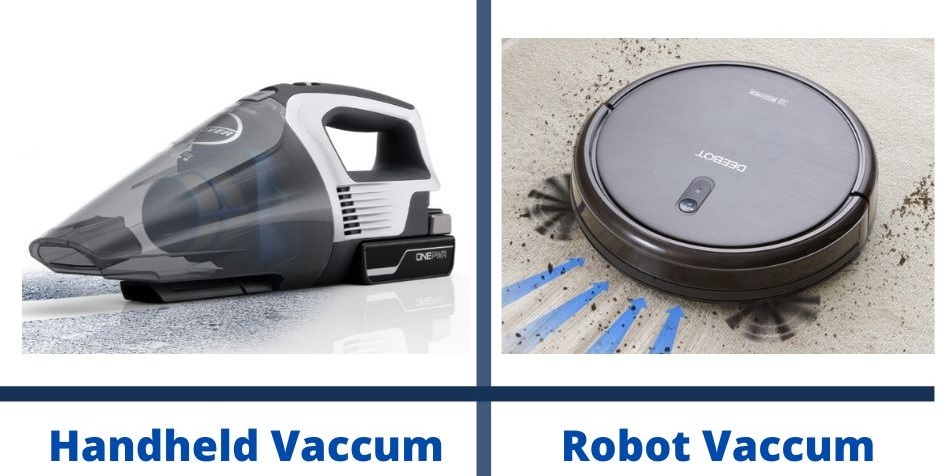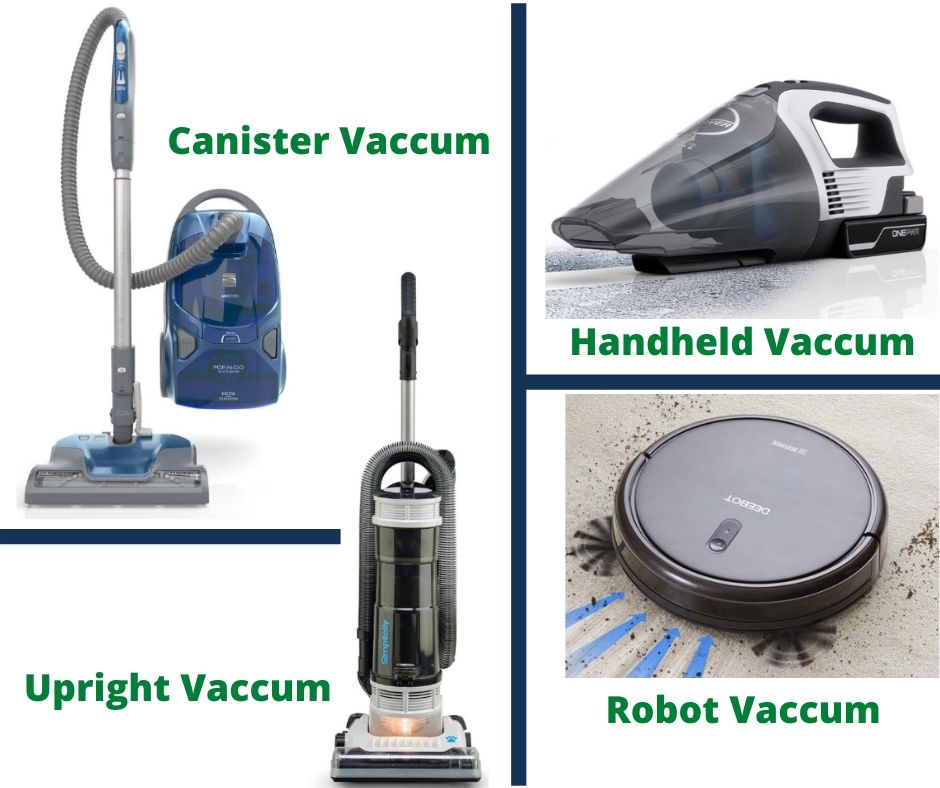In this era of information, one can easily get confused by peeking at the large varieties while buying a necessary household or office equipment without guides.
The vacuum cleaner is one such product where customers often desire to pick the best item with the highest efficiency and within their budget.
So, here are some vacuum cleaner buying guidelines for you to grasp on different models and technologies and their utilities.
Probably most of the users of vacuum cleaners have a common curiosity about how it works.
For the time being, vacuum cleaners are a must everywhere, houses or offices, or even for cars. We cannot even imagine a carpet or rug without a vacuum cleaner.
Types of Vacuum Cleaners:
 Basically, there are mainly four types of vacuum cleaners available these days.
Basically, there are mainly four types of vacuum cleaners available these days.
The first one is The Canister which is very popular in Europe, this type of vacuum cleaner is perfect for cleaning hard floors, stairs, and under furniture, and the attachments are handy for cleaning drapes and upholstery.
Next, The upright dominates the markets of the United States.
Uprights tend to cost less than canister vacuums and cut a wider cleaning swath.

The Third commonly used vacuum cleaner is the handheld one.
They’re handy for light, quick surface cleaning on short-pile carpets and bare floors; some can handle pet hair on upholstery.
They’re also useful for cleaning up your car’s interior.
Finally, the robotics that has a growing demand everywhere, robotic vacuums do the grunge work while you relax.
The performance of a vacuum cleaner can be measured by several parameters, such as Airflow, Airspeed, Suction, Weight, noise power, cord length, hose length, etc.
The power consumption of a vacuum cleaner, in watts, is often the only figure stated.
How does Vacuum Cleaner work?
Answering in the best possible way the question how does a vacuum cleaner works? It can be said: the vacuum cleaner can suck up debris and think of it like a straw.
When you take a sip of drink through a straw, the action of sucking creates a negative air pressure inside the straw: a pressure that is lower than that of the surrounding atmosphere.
The vacuum cleaner uses an electric motor that spins a fan, sucking in the air – and any small particles caught up in it – and pushing it out the other side, into a bag or a canister, to create the negative pressure.
The air, however, does not just pass through and get ejected out the other side. The vacuum cleaner supplies the air through a filter to remove almost all of the dirt particles and dust.
Although there is a difference in size and models they operate in a similar manner.
When the switch is turned on, approximately 120 volts of alternating current is sent to the motor which drives the suction fan and the brush roll when it is applicable.
Keep in mind that intake ports can vary in size as the size of the intake port decreases the speed at which the air travels through the port increases.
For this reason, vacuum cleaner attachments with small intake ports do a better job of picking heavy debris than ones with large intake ports.
How to select the best Vacuum cleaner for you?
Predominantly there are two steps to pick the best one; the first step is selecting the styles of vacuum that suits best for needs, secondly determining features you are looking for.
We have already mentioned four basic types of vacuum cleaner, now we will add some more relevant words about the best two types, regarding their functioning and drawbacks.
An upright vacuum cleaner that stands upright and is easy to use. It is easy to store but a little tough for cleaning under the furniture.
Canister vacuums have solutions for this type of issue. This vacuum separates the body and put it on the end of a wand which makes them more maneuverable. Overall, these vacuums are bulkier than their upright brethren.
When you have selected the style of vacuum cleaner, now you have to determine what features you want to see in your cleaner.
Both Canisters and uprights have Bagged or Bagless features. Which one is right for you? Let’s see some of the advantages and disadvantages of both.
Many bagged vacuum cleaners use HEPA filter that helps to remove dirt particles from the air. Bagless vacuums with chambers are fitted with HEPA filters that trap dust and particles for cleaning.
For this, HEPA vacuums are suitable for people suffering from allergies and asthma.
You don’t need too much maintenance for Bagged Vacuum cleaners. On the other hand, bagless vacuums are cheaper compared to facilities.
HEPA Filter:
 Now a question might have come to your mind about HEPA filters. What is it? Recent vacuum cleaners generally use HEPA H13, H12, or H11 filters. HEPA H10 filters are rare now.
Now a question might have come to your mind about HEPA filters. What is it? Recent vacuum cleaners generally use HEPA H13, H12, or H11 filters. HEPA H10 filters are rare now.
A larger H denotes the high efficiency of the filtering system.
The cost of the vacuum depends on the level of air purification. Asthma and allergy sufferers should keep a HEPA vacuum.
HEPA H14 filters 99.995 particles which can be removed.
Things you should consider while buying a Vacuum Cleaner:
Some crucial things you should check when you buy a vacuum cleaner, Such as:
Durability and ease of use: No matter how great a vacuum cleaner might be in terms of specifications, it must be easy for you to use.
Regardless of your specific situation, the vacuum cleaner you choose should feel good in your hand and not be fatiguing to use.
The weight of the machine is also very notable. The vacuum’s weight can range from 10 (for compact models) to 12-15 pounds (for full-size ones).
Many vacuums for hard floors have the same design and power as standard ones but weigh significantly less.
Cost of a vacuum cleaner:
Nonetheless how good a particular model is, it really doesn’t matter if it’s priced beyond your budget.
If you have a tight budget, then it’s best to check out a model that offers the best value.
High-quality vacuums hang around 5-10 times compared to cheaper vacuums, here’s a breakdown of what you can expect to get at various price points:
Under $300: There are several high-quality vacuums in this range, but these are almost exclusively for hard floors and area rugs or flat carpeting.
$400-600: At this level, vacuums don’t have extra features, but have higher-quality materials, durable motors, and high-class performance.
$650-$1000: The majority of features are available at this level. These vacuum cleaners offer better finishing, lower noise levels, more than 99% filtration.
Also, many of those have configurations like automatic suction control, lightweight floor tools.
Surprisingly, you can also get the best vacuum cleaner under $100 that will still satisfy your cleaning needs.
After understanding the various models and the new technologies that have been used to upgrade vacuum cleaners, you can quickly know how to choose an ideal vacuum cleaner to buy.
Primarily it depends on your budget and how much you can expense on it.
The surface you have in your house or office should be considered also to pick the best vacuum cleaner.

